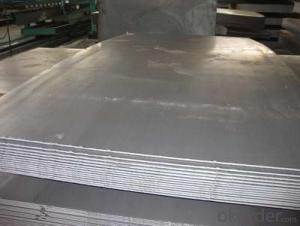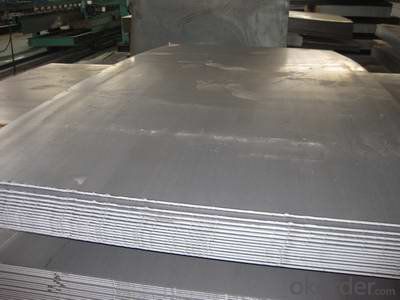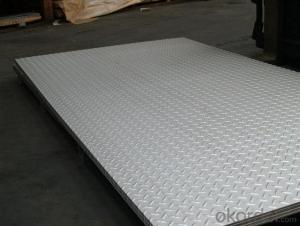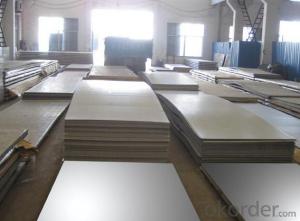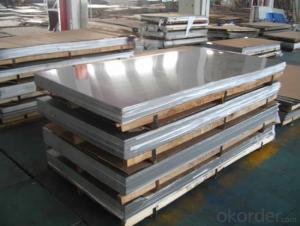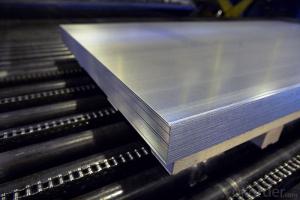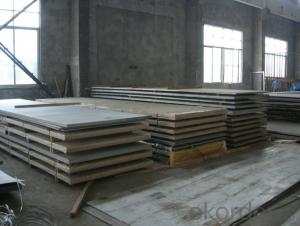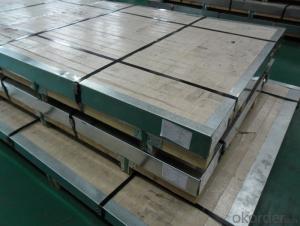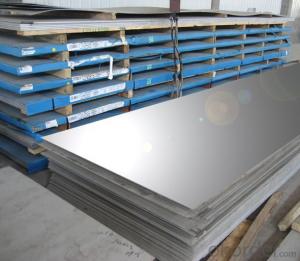Surface Finish Stainless Steel Sheet Plate 408 11% Cr and 8% Ni
- Loading Port:
- China main port
- Payment Terms:
- TT OR LC
- Min Order Qty:
- 50 m.t.
- Supply Capability:
- 10000 m.t./month
OKorder Service Pledge
OKorder Financial Service
You Might Also Like
Stainless Steel Sheet Plate 408 with 11% Cr and 8% Ni
Description:
304 stainless steel is the most widely used in the 300 series stainless steel. Its anti-corrosion property is stronger than the 200-series
stainless steel, but the anti-acid property is worse than 316. 304 stainless steel have a good resistance in high temperature and the
excellent corrosion resistance. 304 stainless steel is more expensive than 201, cheaper than the 316.
1. Commodity: 304 Stainless Steel
2. Technique: Cold Rolled/hot rolled Stainless Steel
3. Grade: 304 Stainless Steel
4. Type: Stainless Steel Sheet/coil
5. Finish: 2B/Ba/8K/Emboss/Etch
6. Edge: mill edge /silted edge
7.Size:1219mm*2438mm,1219mm*3048mm,or as customized
Main Features:
•Escalator, Elevator, Doors
•Furniture
•Production tools, Kitchen appliances, freezers, cold rooms
•Auto Parts
•Machinery and Packaging
•Equipment and Medical devices
•Transport system
Specifications:
Description | steel sheet,hot rolled steel sheet,cold rolled steel sheet, steel sheet,sheet,steel plate |
Standard | ASME, ASTM, EN ,BS,GB,DIN, JIS etc |
Application | Steel sheet applies to construction field, ships building industry, petroleum & chemical industries, war and electricity industries, food processing and medical industry, boiler heat exchanger, machinery and hardware fields. |
Packaging | Standard export sea-worthy packing |
Delivery time | 10-30 days |
Quality | No.1 |
Productivity | 500 tons/Day |
Note | Our company has cooperative relation between the domestic agents. Stainless steel sheet can be made accordingto the customers requirements. Fasten delivery. Quality assured. |
Contacts | If you have any question,please feel free contact me. |
Surface Finish Characteristics:
Surface finish | Characteristics and application |
2B | The surface brightness and flatness of no2B is better than no2D. then through a special surface treatment to improve its mechanical properties,No2B could nearly satisfy comprehensive uses. |
No.1 | Polished with abrasive belt of grit#100-#200, have better brightness with discontinuous coarse stria, used as inner and external ornaments for building, electrical appliances and kitchen utensils etc. |
No.4 | Polished with abrasive belt of grit #150-#180,have better brightness with discontinuous coarse stria, but thinner than No3, are used as bathtub buildings inner and external ornaments electrical appliances kitchen utensils and food processing equipment etc. |
HL | Polished with abrasive belt of grit #150-#320 on the NO.4 finish and has continuous streaks, mainly used as buildings ornaments elevators, door of building, frontal plate etc. |
BA | Cold rolled, bright annealed and skin-passed, the product have excellent brightness and good reflexivity like mirror, kitchen apparatus, ornament etc. |
8K | The product have excellent brightness and prefer reflexivity can to be the mirror. |
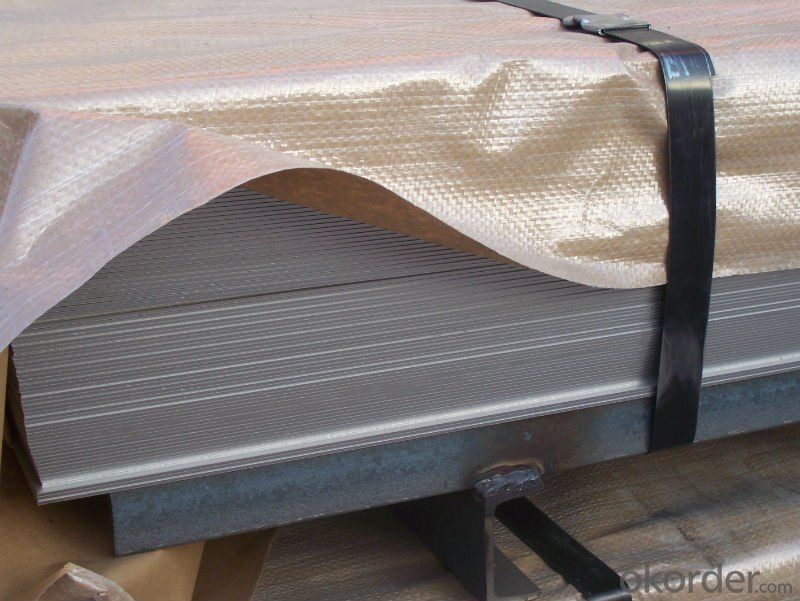
- Q: Can the tile be directly attached to the stainless steel plate?
- The best use of woodworking special adhesive, decorative materials shop sell, otherwise not durable, the best post also find a professional carpenter to paste. Stainless steel is recommended with 304, once and for all. If you want to use glass glue cheaply, use neutral glass adhesive.
- Q: What is the maximum thickness of a stainless steel sheet?
- The maximum thickness of a stainless steel sheet can vary depending on the specific type and grade of stainless steel being used. However, stainless steel sheets are commonly available in thicknesses ranging from 0.4mm to 6mm or even thicker for certain industrial applications.
- Q: Can stainless steel sheets be used for athletic equipment?
- Yes, stainless steel sheets can be used for athletic equipment. Stainless steel is known for its durability, corrosion resistance, and strength, making it an ideal material for various athletic equipment applications. It is commonly used in the construction of gym equipment such as weightlifting bars, dumbbells, and exercise benches. Stainless steel sheets are also used to manufacture basketball hoops, soccer goalposts, and other outdoor sports equipment due to their ability to withstand harsh weather conditions. Additionally, stainless steel sheets can be customized and fabricated into different shapes and sizes, making them versatile for various athletic equipment needs.
- Q: Can stainless steel sheets be used for water pipelines?
- Yes, stainless steel sheets can be used for water pipelines. Stainless steel is highly resistant to corrosion and has excellent strength, making it a suitable material for water pipelines that require durability and longevity. Additionally, stainless steel's smooth surface helps to maintain water flow efficiency and prevent contamination.
- Q: Are stainless steel sheets suitable for food display cases?
- Yes, stainless steel sheets are highly suitable for food display cases. They have excellent hygiene properties, as they are resistant to corrosion and can be easily cleaned and sanitized. Stainless steel is also durable and can withstand frequent use and exposure to various temperatures. Additionally, its sleek and modern appearance adds an attractive and professional look to food display cases.
- Q: Can stainless steel sheets be used for storage tanks?
- Yes, stainless steel sheets can indeed be used for storage tanks. Stainless steel is known for its high corrosion resistance, making it an ideal material for storing various substances, including chemicals, liquids, and gases. It is highly durable, which ensures a longer lifespan for the storage tank and reduces the risk of leaks or contamination. Stainless steel tanks are also easy to clean and maintain, making them suitable for industries such as food and beverage, pharmaceuticals, and wastewater treatment. Additionally, stainless steel is non-reactive, meaning it does not interact with the stored substances, ensuring the integrity and quality of the materials being stored. Overall, stainless steel sheets are a reliable and versatile choice for storage tank applications.
- Q: What are the different types of edge finishes for stainless steel sheets?
- Stainless steel sheets can be treated with different types of edge finishes to enhance their appearance, functionality, and protection against corrosion and damage. 1. The mill finish is the most basic type, leaving the edges straight and unfinished without any additional treatment or polishing. 2. The deburred edge involves smoothing out rough edges using abrasive materials to eliminate sharp edges and burrs, making the sheet safer to handle and preventing potential injuries. 3. A rounded edge finish involves milling or machining the edges to create a curved or rounded profile, reducing the risk of cuts or injuries caused by sharp edges. 4. The beveled edge finish entails cutting or grinding the edges at an angle to create a sloped or chamfered profile, adding a decorative element and creating a smooth transition between surfaces. 5. The polished edge finish involves polishing the edges to a high shine, creating a smooth, reflective surface that enhances the overall appearance of the sheet. 6. The brushed edge finish applies a brushed texture to the edges, creating a consistent pattern of fine lines or scratches for a unique and contemporary look. These various edge finishes for stainless steel sheets offer different benefits and can be chosen based on specific application requirements. Whether for safety, aesthetics, or functionality, selecting the right edge finish can greatly enhance the performance and visual appeal of stainless steel sheets.
- Q: Can stainless steel sheets be used for food packaging or containers?
- Food packaging or containers can indeed utilize stainless steel sheets. The food industry widely employs stainless steel due to its numerous advantageous qualities. Its corrosion resistance guarantees that the food will not react with the container, ensuring safety for consumption. Moreover, stainless steel is highly durable, making it appropriate for long-term utilization in food packaging or containers. It is also effortless to clean and maintain, meeting the necessary hygiene standards. Furthermore, stainless steel containers or packaging can withstand extreme temperature changes, making them suitable for diverse food storage and transportation requirements. All in all, stainless steel sheets are a dependable and secure option for food packaging or containers.
- Q: Are stainless steel sheets suitable for high-traffic areas?
- Indeed, high-traffic areas can benefit from the use of stainless steel sheets. Renowned for their durability, strength, and resistance to corrosion, stainless steel proves to be an outstanding option for spaces frequented by many individuals. It possesses the ability to endure continuous usage and mistreatment, encompassing scratches, dents, and impacts, all while maintaining its structural integrity. Moreover, stainless steel sheets present themselves as effortless to clean and maintain, rendering them an optimal choice for regions necessitating frequent cleaning and disinfection. In summary, stainless steel sheets offer a dependable and enduring solution for high-traffic areas.
- Q: Can stainless steel sheets be used for water filtration systems?
- Yes, stainless steel sheets can be used for water filtration systems. Stainless steel is corrosion-resistant, durable, and can withstand high temperatures, making it suitable for water filtration applications. Additionally, its smooth surface helps to prevent the growth of bacteria and biofilm, ensuring clean and safe water filtration.
Send your message to us
Surface Finish Stainless Steel Sheet Plate 408 11% Cr and 8% Ni
- Loading Port:
- China main port
- Payment Terms:
- TT OR LC
- Min Order Qty:
- 50 m.t.
- Supply Capability:
- 10000 m.t./month
OKorder Service Pledge
OKorder Financial Service
Similar products
Hot products
Hot Searches
Related keywords
